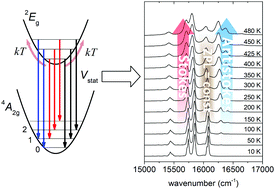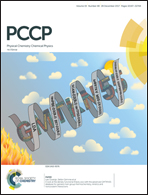Temperature effect on the emission spectra of narrow band Mn4+ phosphors for application in LEDs
Abstract
Temperature dependence of the luminescence shape and decay time of narrow band Mn4+ fluoride phosphors: Rb2GeF6:Mn4+ and KNaSiF6:Mn4+ was investigated. The temperature changes in the relative intensity between the zero-phonon line and both phonon sidebands were observed in both samples. The sideband spectra consist of three lines related to interaction with three different phonon modes labeled ν3, ν4 and ν6. We present a comprehensive quantum theory which allows calculation of the luminescence intensity and the luminescence lifetime by simultaneously taking into account odd parity crystal fields, odd parity phonon modes and spin–orbit coupling. Since we include all modes, for which the respective interaction strengths and energies of the phonons are known, our approach does not involve any free parameters. We also discuss our results in relation to the temperature dependence of the lifetime of the 2Eg → 4A2g transition, taking into account the quantum efficiency of the system and the migration of the excitation energy. The presented model is applicable to all materials doped with Mn4+ ions and also to any narrow line emitting phosphor, where a zero-phonon line and phonon structure is simultaneously observed in the emission spectrum.



 Please wait while we load your content...
Please wait while we load your content...